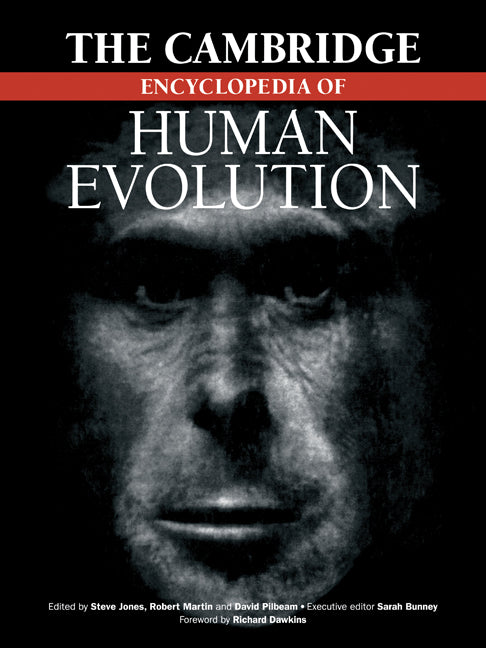Freshly Printed - allow 8 days lead
Couldn't load pickup availability
The Cambridge Encyclopedia of Human Evolution
A wide-ranging introduction to the human species that places modern humans in evolutionary perspective.
Stephen Jones (Edited by), Robert D. Martin (Edited by), David R. Pilbeam (Edited by), Sarah Bunney (Edited by), Richard Dawkins (Foreword by)
9780521467865, Cambridge University Press
Paperback, published 30 June 1994
524 pages
27.9 x 21 x 2.7 cm, 1.17 kg
' … a feast of information for anyone interested in the history of our species … If (whether student or professional) you're interested in human evolution, you'll want to have this volume handy.' Ian Tattersall, Nature
The Cambridge Encyclopedia of Human Evolution is a wide-ranging introduction to the human species that places modern humans in evolutionary perspective. Over seventy scholars world-wide have worked on the encyclopedia, covering a range of subjects from genetics, primatology and fossil origins to human biology and ecology, brain function and behaviour, demography and disease. Emphasis is placed throughout on the biological diversity of modern people and the increasing convergence of the fossil and genetic evidence for human evolution that has emerged. Due to the need to look at humankind in the context of our closest relatives, the encyclopedia also pays particular attention to the evolution and ecology of other living primates - lemurs, lorises, tarsiers, monkeys and apes. It deals with the evolution and ecology of human society, as reconstructed from archaeological remains, and from studies of tribal peoples and living primates today. It considers the biology of uniquely human abilities such as language and upright walking, and it reviews the biological future of humankind in the face of modern challenges.
1. Introduction: what makes us human?
2. Patterns of primate evolution
3. The life of primates
4. The brain and language
5. Primate social organisation
6. Human evolution in geological context
7. The primate fossil record
8. Primate genetics and evolution
9. Genetic clues of relatedness
10. Early human behaviour and ecology
11. Human populations, past and present
12. Conclusion: the evolutionary future of humankind.
Subject Areas: Human biology [PSX], Evolution [PSAJ], Physical anthropology [JHMP], General encyclopaedias [GBA]


